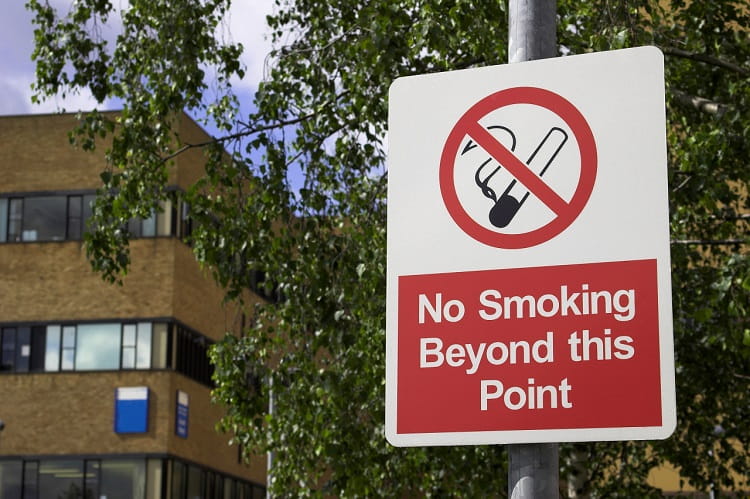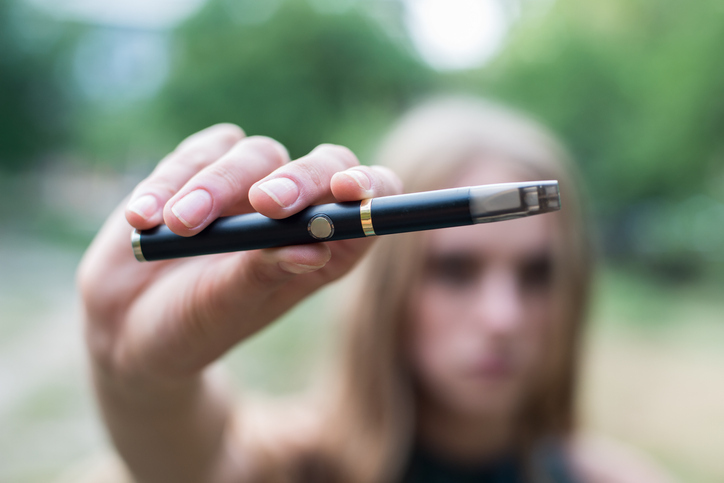Understanding the E-Cigarette Dilemma
The ongoing health concerns related to e-cigarettes have prompted questions about their safety and usage. The cause of the reported illnesses is yet to be definitively determined. While e-cigarettes are commonly used for tobacco, the Centers for Disease Control and Prevention (CDC) notes that many affected individuals have also reported vaping THC, the principal psychoactive component in marijuana. More research is required to ascertain whether a specific product or substance is directly responsible for these illnesses. buy weed
Guidance for E-Cigarette Users
The American Heart Association strongly advises against the use of e-cigarettes. If individuals choose to use them, seeking immediate medical attention upon the onset of symptoms is recommended. For non-emergency inquiries about e-cigarettes, local poison control centers can be reached at 1-800-222-1222.
Quitting Smoking and E-Cigarettes
If using e-cigarettes as a method to quit smoking is being considered, it should be explored only after attempting proven smoking cessation approaches and under the guidance of a healthcare professional. While some smokers have reported success with e-cigarettes, their efficacy in helping people quit smoking has not been scientifically proven. buy weed
Understanding the Risks
The complete short- and long-term health impact of e-cigarettes remains uncertain. However, it is noteworthy that these devices often contain nicotine, a highly addictive substance with detrimental effects on the developing brain. Moreover, the increasing experimentation with chemicals, including THC, among e-cigarette users raises additional health concerns.
The American Heart Association’s Advocacy
Our organization actively engages at federal, state, and community levels to advocate for public policies preventing tobacco use and addressing nicotine addiction. We are committed to raising awareness about the dangers of tobacco use, promoting effective smoking cessation methods, and providing guidance to parents on preventing tobacco use among children. buy weed
How to Keep Kids and Teens from Smoking and Vaping

It’s a burning question for parents and public health officials alike: How do you keep a new generation from starting to smoke?
We already know some strategies that have worked. Public health campaigns aimed at young people and consistent reinforcement from parents help keep them from striking up the dangerous habit.
But first, a basic question: Why? Why is it so vital that we continue to discourage our youth from using tobacco?
Four facts to know
- Kids are still smoking. Every day in the U.S., about 2,000 teenagers smoke their first cigarette, and over 300 of them become daily cigarette smokers.
- Smoking is dangerous. According to the U.S. Surgeon General, 5.6 million Americans younger than 18 today will die early from smoking-related diseases.
- Most smokers start young. If young people don’t start using tobacco by age 26, they almost certainly will never start.
- It’s not just cigarettes. Kids today are exposed to cigars, cigarillos, e-cigarettes (vaping and juuling), hookah (water pipe) and smokeless tobacco (snuff, chew and dissolvable tobacco). Several of these forms of tobacco are “flavored,” increasing their appeal to young people.
What’s working
Tobacco companies are targeting young people with ads, price discounts and enticing new products such as e-cigarettes designed to look like sleek gadgets. Many teens and young adults exposed to these efforts are highly impressionable and dealing with social pressures to “fit in” with peers.
Here are some approaches that have worked to counteract those forces:
- Raising cigarette prices. Most teens are sensitive to pricing. Higher prices can deter would-be smokers.
- Restricting access. The American Heart Association advocates adopting Tobacco 21 laws nationwide — setting the minimum legal sale age at 21 for every state.
- Limiting tobacco marketing. Regulatory initiatives that ban youth-focused marketing efforts have helped curb smoking’s appeal to young people.
- Conducting media campaigns. Education campaigns (such as the Truth Initiative) have helped teens understand how tobacco companies exploit them. These campaigns are even more effective when supported by school-based and family-based programs.
- Providing quit smoking programs. Affordable and accessible smoking cessation programs can help young smokers quit as well as parents and caregivers who want to model healthier behavior.
What parents can do
As a parent, you’re a powerful influence — even if your teenager seems to disagree with everything you say. Here are some of the most effective ways you can steer your kids away from tobacco: buy weed
- Maintain a dialogue. Start early. Begin talking with your kids about smoking and vaping in kindergarten. Be honest and open to seeing things from your child’s point of view. And don’t stop. Keep the conversation going as kids get older.
- Think more than cigarettes. Explain that smokeless tobacco, hookah and e-cigarettes all have dangers, including nicotine addiction.
- Prepare your kids for peer pressure. Discuss what they might say if a friend offers a cigarette or e-cigarette.
- Set a good example. If you smoke or vape, the best thing you can do is quit. At least don’t smoke around your children.
- Establish a smoke-free home. Don’t allow family members or friends to smoke in your home or car. Make sure the places where your child spends a lot of time are tobacco-free.
If your child has started smoking or vaping, try to learn why. This may help you talk with him or her more effectively. Instead of punishment, offer understanding and help to resist the dangerous lure of tobacco use and addiction.
E-cigarettes Threaten the “Tobacco Endgame”

The tobacco endgame – ending tobacco use and nicotine addiction in the U.S. – is within sight. About 14 percent of people in America smoke. The goal is to drive that rate down below five percent to save millions of lives.
But e-cigarettes and other tobacco products (like cigarillos, hookah and smokeless tobacco) pose a significant threat to this goal. A new generation of tobacco products is addicting a new generation of users to tobacco and nicotine. More kids and young adults are using these products, and they’re using them more often.
The kids are not all right.
The 2018 National Youth Tobacco Survey showed an alarming surge in e-cigarette use. Vaping is now the most popular way for adolescents to use tobacco. From 2017 to 2018, usage rose by 78 percent for high school students and 48 percent for middle school students.
Many kids falsely believe e-cigarettes and other tobacco products are safe. Some don’t even realize they contain nicotine. But these products can deliver much higher concentrations of this addictive drug than traditional cigarettes. For example, a JUUL prefilled liquid pod contains as much nicotine as a whole pack of cigarettes. buy weed
According to the U.S. surgeon general, exposure to nicotine during adolescence can cause addiction and harm the developing brain. But there’s no safety helmet to protect kids from this growing danger.
Here are the top reasons young people give for using e-cigs:
- Use by a friend or family member
- Appealing flavors like mint, candy, fruit or chocolate
- Belief that they are less harmful than other forms of tobacco
The youth tobacco epidemic is a serious public health threat. We know nearly 90 percent of smokers first try a tobacco product by age 18. But if people don’t start using tobacco by age 26, they are likely to never start. Our focus must be on prevention at this critical stage of life.
What about adults?
Tobacco companies promote e-cigarettes as a way to help smokers quit. But much more evidence is needed to show their effectiveness for quitting cigarettes and other forms of tobacco.
These products may help some smokers quit or move to a less harmful product, but they can also lead to “dual use” – continuing to smoke traditional cigarettes and also vaping. So even if e-cigarettes are less harmful than traditional cigarettes, those benefits are erased when both products are used. And dual use makes it even harder to quit because of the increased nicotine exposure.
Studies have also shown an association between vaping and other substances: alcohol, illegal or recreational drugs, and misuse of over-the-counter and prescription medications (such as opioids).
The truth is, there is no “safe” tobacco product. We don’t yet know the long-term health effects, especially of these newer products.
Most people don’t fully understand nicotine addiction and its health threats. Health care professionals need to be able to talk with patients about tobacco use, including e-cigarettes and these newer products. Thorough training and education can help make these conversations more meaningful and informed.
Seeing through the smoke screen.
And yet, tobacco companies have grown bolder in their efforts to keep people addicted and misinformed:
- They fund lawsuits to prevent or weaken tobacco-control policies.
- They spend millions lobbying lawmakers to oppose such policies.
- They target products and promotions to youth and other at-risk populations, including women, ethnic groups, LGBTQ people, rural residents, people with lower income and less education, and people with mental health conditions.
- They support watered-down and less effective tobacco-control measures as a public relations ploy.
- They fund organizations and groups that claim to address the tobacco epidemic but instead divert attention from proven measures.
How do we get to the tobacco endgame?
Reaching the tobacco endgame and preventing use by kids and young adults will require strong government oversight. We need stronger regulation of the design, manufacturing, sales and marketing of all tobacco products. For example:
- Restrict marketing efforts like celebrity endorsements, movie placements, price promotions, event sponsorships and merchandise branding.
- Ban characterizing flavors and sweeteners to reduce appeal to kids.
- Put graphic warning labels and nicotine concentration information on all products and work toward reducing nicotine levels in cigarettes and cigars.
- Strengthen enforcement efforts to prevent illegal sales of tobacco products.
- Verify the effectiveness of products marketed to help people stop smoking.
Support what’s already working.
We must also continue to support proven strategies and public policy, such as:
- Public education campaigns
- Youth prevention programs
- Advertising restrictions
- Clean indoor air laws
- Access to and coverage of evidence-based methods to quit tobacco use and nicotine addiction
- Tobacco excise taxes
- Ending the sale of tobacco in pharmacies and health-related businesses
- Raising the tobacco sales age to 21 (Tobacco 21 laws)
How you can help.
- Stay tobacco-free. If you smoke or use tobacco, make a plan to quit now.
- Talk with young people in your life about the dangers of vaping and any tobacco use.
- Share our infographic with your social networks.
- Advocate for strong, comprehensive tobacco policies and regulation.
- Join local efforts in your community and state at yourethecure.org.
Types of tobacco products.
Several types of products are now attracting new users through appealing flavors, aggressive marketing and social media engagement. Here are a few you should know about.
Cigarillos – Small cigars that resemble traditional cigarettes but are often exempt from regulation that applies to cigarettes. They tend to be low cost and come in flavors. They are the tobacco product most used by black adolescents.
E-cigarettes – Electronic devices containing a nicotine-based liquid that is vaporized and inhaled to mimic the experience of smoking cigarettes.
JUUL – One of the most popular types of e-cigarette that became available in the U.S. in 2015. Because of its small size, appealing flavors, less harsh inhale sensation and minimal vapor clouds exhaled, usage by kids in schools has become a nationwide epidemic. There are now several similar products under different brand names.
Heat-not-burn products – These devices generate an inhalable aerosol by heating tobacco at approximately 500°F rather than burning.
Hookah – A tobacco pipe with a long, flexible tube that draws the smoke through water. Often used to smoke flavored tobacco in a social group setting or “hookah bar.”
Smokeless tobacco – Products such as chewing and dipping tobacco, dissolvable tobacco lozenges, snus, and snuff.
What is vaping?
Vaping is the act of inhaling and exhaling the aerosol, often referred to as vapor, which is produced by an e-cigarette or similar device. The term is used because e-cigarettes do not produce tobacco smoke, but rather an aerosol, often mistaken for water vapor, that actually consists of fine particles. Many of these particles contain varying amounts of toxic chemicals, which have been linked to heart and respiratory diseases and cancer.
How Smoking and Nicotine Damage Your Body
You probably know about the relationship between smoking and lung cancer, but did you know smoking is also linked to heart disease, stroke and other chronic diseases? Smoking can increase your risk for cancer of the bladder, throat, mouth, kidneys, cervix and pancreas. Thinking about quitting? Look at the facts!
Why should you quit?
- Smoking is the most preventable cause of death and disability in the United States.
- Almost one third of deaths from coronary heart disease are due to smoking and secondhand smoke.
- Smoking is linked to about 90% of lung cancer cases in the United States.
- Smoking rates overall are down, but too many adults still smoke, vape and use other forms of tobacco, especially between the ages of 21 and 34.
- Almost half of U.S. children ages 3-11 are exposed to secondhand smoke.
- On average, smokers die more than 10 years earlier than nonsmokers.
- You can be one of the millions of people who successfully quit every year.
What makes cigarettes so toxic and dangerous?
There are more than 7,000 chemical components found in cigarette smoke and hundreds of them are harmful to human health, according to the Centers for Disease Control and Prevention.
Here are a few examples:
- 1,3-Butadiene is a chemical used to manufacture rubber. It is considered to be a cancer-causing chemical that can cause certain blood cancers.
- Arsenic is used to preserve wood. Some arsenic compounds have been linked to cancer of the lung, skin, liver and bladder.
- Benzene is used to manufacture other chemicals. It can cause cancer, particularly leukemia, in humans.
- Cadmium is a metal used to make batteries. Cadmium and cadmium compounds can cause lung cancer and have been associated with kidney and prostate cancer.
- Chromium VI is used to make alloy metals, paint and dyes. Chromium VI compounds cause lung cancer and have been associated with cancer of the nose and nasal sinuses.
- Formaldehyde is used to make other chemicals and resins. It is also used as a preservative. Formaldehyde causes leukemia and cancer in respiratory tissues.
- Polonium-210 is a radioactive element that has been shown to cause cancer in animals.
- Tar is not one single chemical, instead it describes several chemicals that are in tobacco smoke. It leaves a sticky, brown residue on your lungs, teeth and fingernails.
Carbon monoxide & nicotine: A dangerous duo
Carbon monoxide is a harmful gas you inhale when you smoke. Once in your lungs, it’s transferred to your bloodstream. Carbon monoxide decreases the amount of oxygen that is carried in the red blood cells. It also increases the amount of cholesterol that is deposited into the inner lining of the arteries which, over time, can cause the arteries to harden. This leads to heart disease, artery disease and possibly heart attack.
Nicotine is a dangerous and highly addictive chemical. It can cause an increase in blood pressure, heart rate, flow of blood to the heart and a narrowing of the arteries (vessels that carry blood). Nicotine may also contribute to the hardening of the arterial walls, which in turn, may lead to a heart attack. This chemical can stay in your body for six to eight hours depending on how often you smoke. Also, as with most addictive substances, there are some side effects of withdrawal. And some e-cigarettes and newer tobacco products deliver even more nicotine than traditional cigarettes.
Secondhand smoke
Smokers aren’t the only ones affected by tobacco smoke. Secondhand smoke and vapor is a serious health hazard for nonsmokers, especially children. Nonsmokers who have high blood pressure or high blood cholesterol have an even greater risk of developing heart diseases when they’re exposed to secondhand smoke. Secondhand tobacco smoke contributes to thousands of premature heart disease and lung cancer deaths. Studies show that the risk of developing heart disease is about 25-30 percent higher among people exposed to environmental tobacco smoke at home or work. Secondhand smoke promotes illness, too. Children of smokers have many more respiratory infections than do children of nonsmokers.
The bottom line
Cigarettes, e-cigarettes and other tobacco products contain many dangerous toxins. The best thing you can do for your health is to quit tobacco entirely. Don’t spend the rest of your life chained to a nicotine addiction. Thousands of people kick the habit every year, and you can be one of them. It may not be easy, but you can do it!
What You Need to Know About Vaping

Considering vaping instead of smoking?
Check out the truth about e-cigarettes before you pick one up.
What is vaping?
Using an e-cigarette is sometimes called vaping, from the word vapor. E-cigarettes are battery-operated devices that heat liquid to release an aerosol (vapor) inhaled by the user. The liquid can contain propylene glycol, nicotine, flavorings and other substances. E-cigarette makers and supporters claim they provide a healthier alternative to smoking. Many users think they are an acceptable way to use nicotine where smoking isn’t allowed.
What are the risks?
While e-cigarette vapor may have fewer toxic substances than cigarette smoke, e-cigarette users are still exposed to nicotine, which is a dangerous and highly addictive chemical, as well as toxins, metals and contaminants. Non-users around them also may be exposed to these harmful chemicals through the exhaled vapor. And the liquid can be toxic if eaten or absorbed through the skin – a poisoning risk to young children in users’ households. buy weed
Smoking kills more than 480,000 Americans each year. It’s one of the most preventable causes of death and disease. Adults and kids are smoking cigarettes less but using e-cigarettes and other tobacco products more. Vaping may help re-normalize tobacco use and get kids started, even leading them to regular cigarettes over time. E-cigarettes are the most common tobacco product used by adolescents. In 2023, over 2.1 million students used e-cigarettes. Use among high school students declined from 14.1% to 10.0%. from 2022 to 2023. But use among middle-school students increased from 3.3% to 4.6%.
Can it really help me stop smoking?
E-cigarettes are sometimes marketed as a way to quit smoking, but there is not enough scientific evidence that it works. One study reported adult smokers who used e-cigarettes were 28% less likely to quit successfully. The American Heart Association recommends using proven methods to quit smoking. The Association continues to advocate for strong regulation of e-cigarettes, such as including them in smoke-free policies, and restricting flavorings and marketing to kids.
The Benefits of Quitting Smoking Now
Having trouble quitting smoking? Keep a positive outlook! Concentrating on the benefits of quitting might just be the motivation you need.
Everybody knows smoking and using tobacco is bad for you, but do you know exactly how dangerous it is? It’s important to understand your risks, but there’s a lot more to it than frightening statistics. Let’s look at the upside.
Here are some benefits of quitting:
- You’ll be able to exercise or be physically active with less shortness of breath.
- Your clothes, hair, body, car and home will smell better.
- Your sense of taste and smell will return to normal.
- The stains on your teeth and fingernails will start to fade.
- You’ll save hundreds or thousands of dollars a year. Find out how much with this savings calculator(link opens in new window).
According to the American Heart Association and the U.S. Surgeon General, this is how your body starts to recover when you quit smoking:
- In the first 20 minutes, your blood pressure and heart rate drop from the nicotine-induced spikes.
- After several days, the carbon monoxide levels in your blood return to normal.
- After two weeks, your circulation and lung function begin to improve.
- From one to 12 months, clear and deeper breathing gradually returns; you have less coughing and shortness of breath; you regain the ability to cough productively instead of hacking, which cleans your lungs and reduces your risk of infection.
- After three to six years: your risk of coronary heart disease is reduced by 50%.
- After five to 10 years, your risk of cancer of the mouth, throat and voice box is cut in half. Your risk of stroke also decreases.
- After 10 years, your risk of lung cancer drops by 50%. Your risk of cancer of the bladder, esophagus and kidneys also decrease.
- After 15 years, your risk of coronary heart disease is almost the same as a non-smoker’s.
What about e-cigarettes and smokeless tobacco products?
No tobacco product is safe, and there’s no evidence that they can help you quit smoking. They may be just as addictive and may contain dangerous levels of nicotine, chemicals, neurotoxins and metals. Talk with your health care professional about safe and effective ways to quit smoking and stay tobacco-free.

